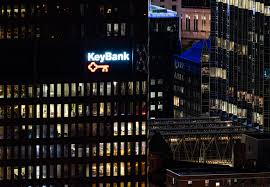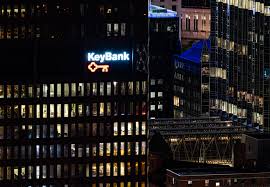
Making Homeownership More Attainable: A Guide to Down Payments and Closing Costs
For many aspiring homeowners, the upfront expenses—like down payments and closing costs—can feel overwhelming. These financial hurdles often cause hesitation and add to the increasing cost of buying a home. According to KeyBank’s 2025 Financial Mobility Survey, a significant number of Americans feel that homeownership is out of reach for them personally and for the average individual. However, the survey also revealed that access to financial education can boost confidence during the homebuying journey.
In honor of Fair Housing Month, we’re spotlighting ways to make owning a home more realistic and sustainable. While the path to homeownership can be complex, your bank can offer valuable guidance—especially when it comes to navigating those big-ticket costs.
Down Payments
The traditional recommendation is to put down 20% of the home's price. While doing so can secure better interest rates and lower monthly payments, it’s important to evaluate what works best for your financial goals and circumstances. Here are a few strategies to consider:
For many aspiring homeowners, the upfront expenses—like down payments and closing costs—can feel overwhelming. These financial hurdles often cause hesitation and add to the increasing cost of buying a home. According to KeyBank’s 2025 Financial Mobility Survey, a significant number of Americans feel that homeownership is out of reach for them personally and for the average individual. However, the survey also revealed that access to financial education can boost confidence during the homebuying journey.
In honor of Fair Housing Month, we’re spotlighting ways to make owning a home more realistic and sustainable. While the path to homeownership can be complex, your bank can offer valuable guidance—especially when it comes to navigating those big-ticket costs.
Down Payments
The traditional recommendation is to put down 20% of the home's price. While doing so can secure better interest rates and lower monthly payments, it’s important to evaluate what works best for your financial goals and circumstances. Here are a few strategies to consider:
- Choose a More Affordable Property: Just because you qualify for a certain loan amount doesn’t mean you need to spend the maximum. Opting for a home below your budget can help reduce your upfront costs and give you more wiggle room for monthly expenses, taxes, insurance, and future repairs. Bear in mind that a smaller down payment might mean paying for private mortgage insurance (PMI), which adds to your monthly mortgage bill.
- Plan Ahead: Buying a home isn’t something that happens overnight. Give yourself several months to prepare. Avoid opening new credit lines before applying for a mortgage—doing so could lower your credit score and increase your loan’s interest rate.
- Explore Loan Options: Some lenders offer mortgages with reduced or even no down payment requirements. For example, KeyBank’s Key Community Mortgage is designed to help qualified buyers purchase owner-occupied homes with flexible terms.
Closing Costs
Closing costs are an inevitable part of buying a home, but they don’t have to derail your plans. Consider these approaches to help manage or reduce them:
Closing costs are an inevitable part of buying a home, but they don’t have to derail your plans. Consider these approaches to help manage or reduce them:
- Negotiate with the Seller: If a seller is eager to close quickly, they might be open to covering part or all of the closing costs. In some cases, this arrangement can offer tax advantages to the seller and benefit both parties.
- Comparison Shop: Some closing-related services—like home inspections, title searches, and insurance—can be shopped for independently. While your lender may provide a list of suggested providers, you're free to choose alternatives that meet their requirements and potentially save money.
- Finance Certain Fees: Depending on your lender, you might have the option to roll certain closing costs into your mortgage. This can ease the burden of upfront expenses. These costs may include appraisal fees, credit checks, title insurance, and other administrative charges. Special programs may also be available for first-time buyers or those refinancing.
KeyBank’s Mortgage Loan Officers are equipped to help guide you through the homebuying process and introduce you to loan options and tools like the Mortgage Affordability Calculator, which can help estimate a comfortable budget. Don’t forget to account for all parts of your mortgage—including the down payment, principal, interest, taxes, insurance, and any potential PMI.
No matter where you are on your journey to homeownership, KeyBank is here to offer support and solutions tailored to your needs—every step of the way.
No matter where you are on your journey to homeownership, KeyBank is here to offer support and solutions tailored to your needs—every step of the way.


 Smart Tips to Make Homeownership More Affordable
Smart Tips to Make Homeownership More Affordable




 Companies
Companies